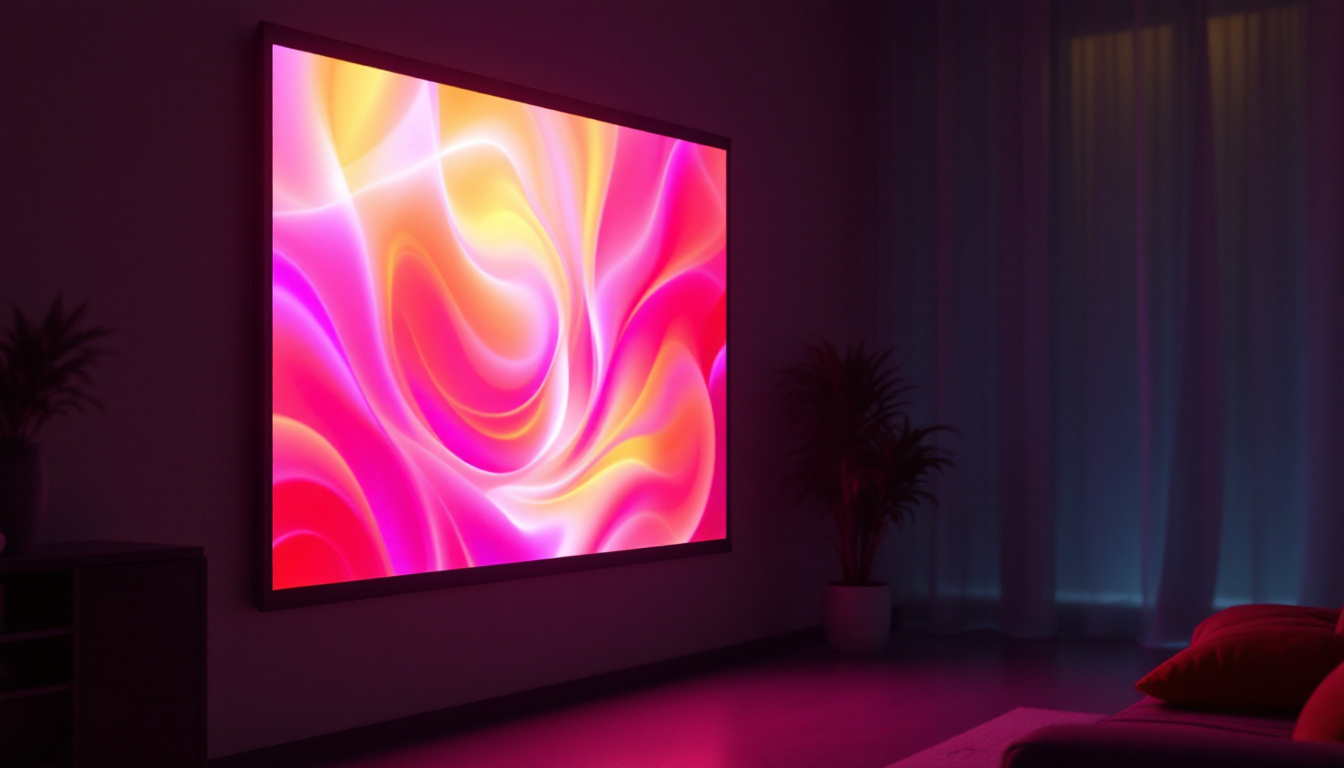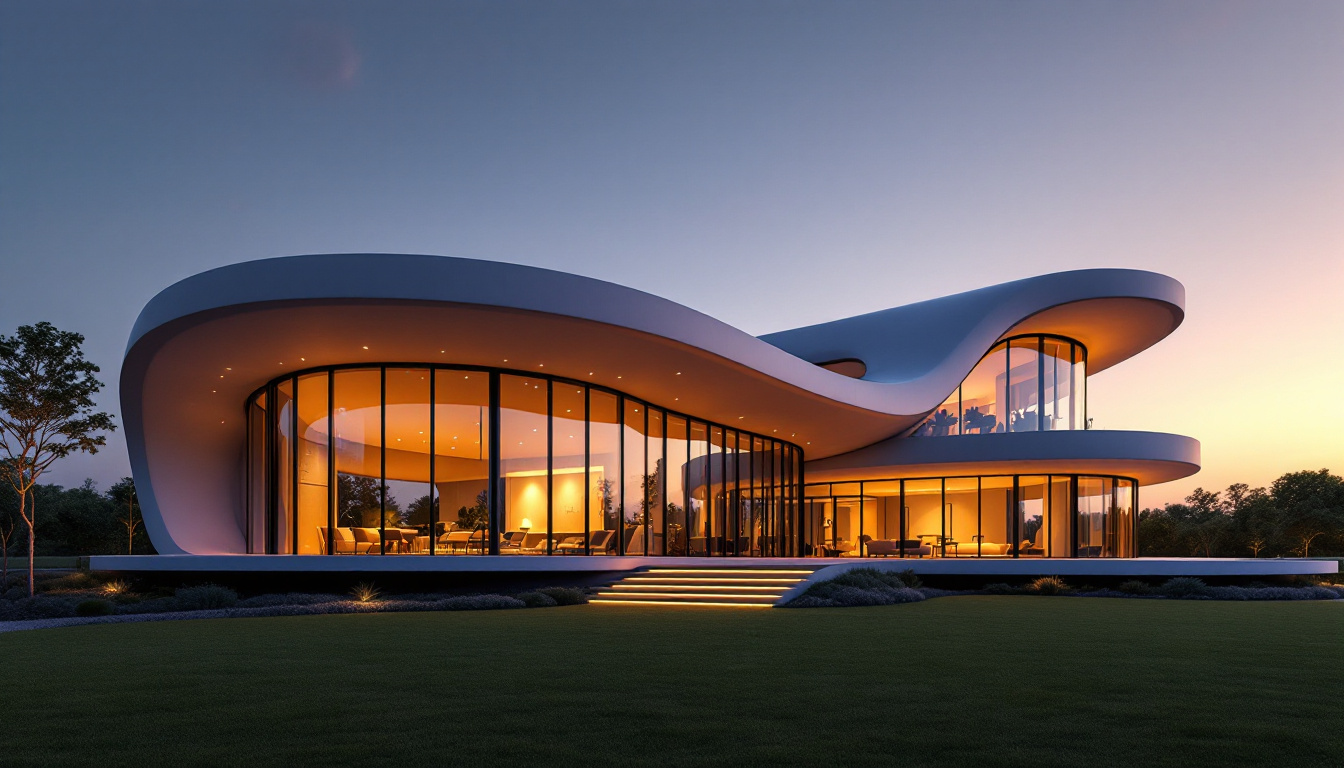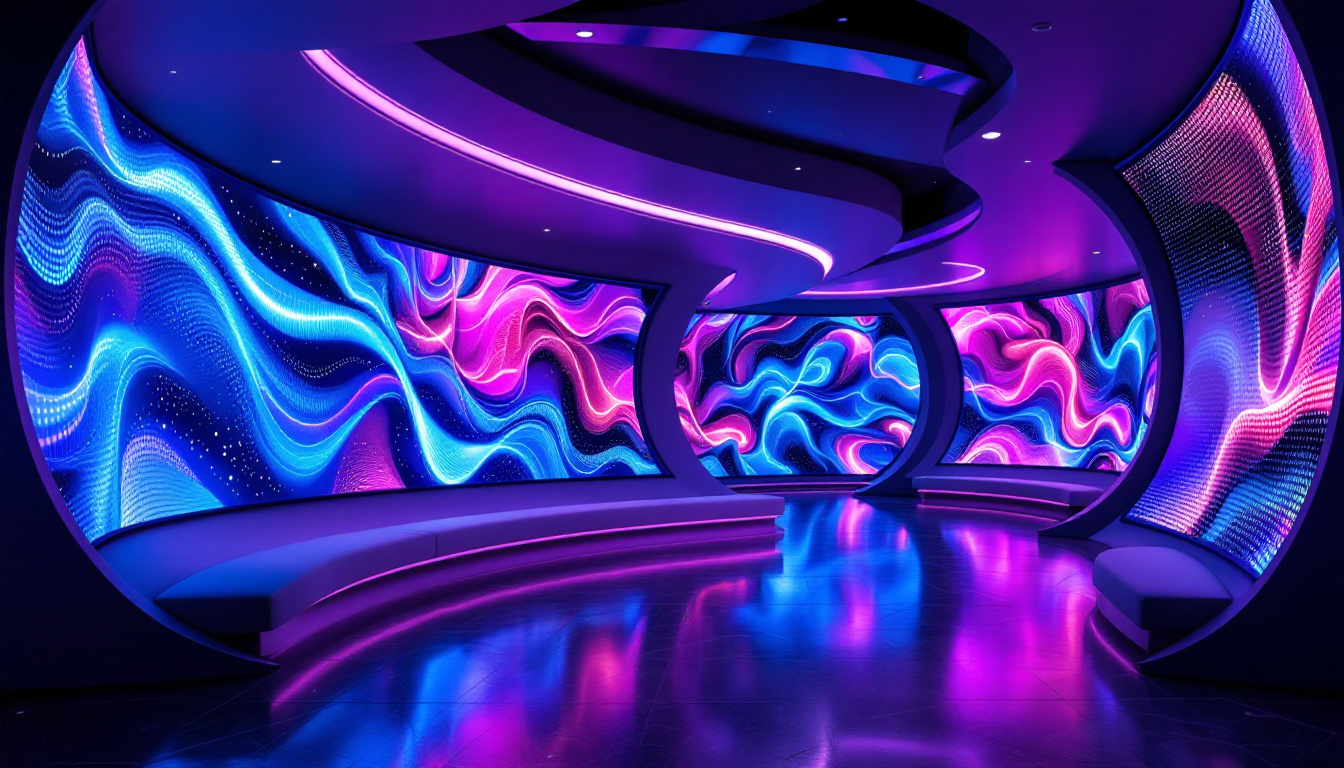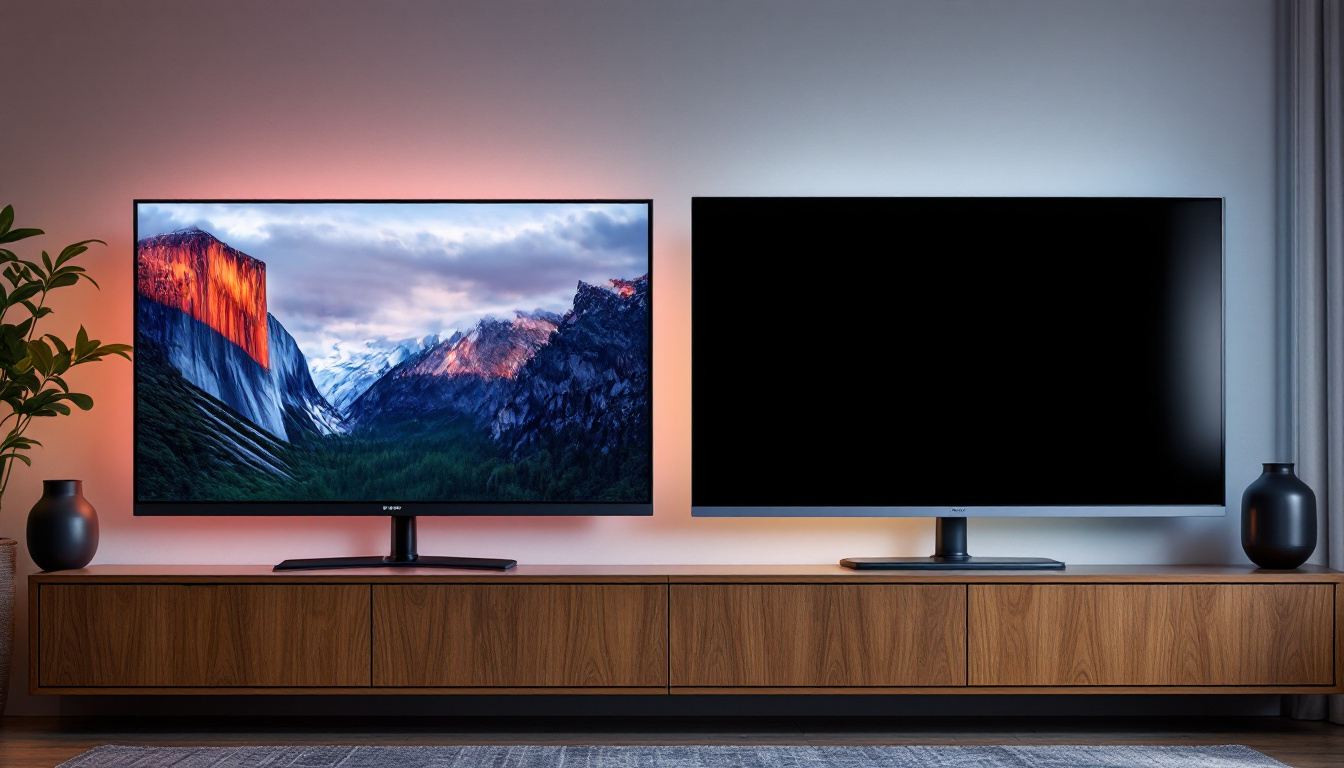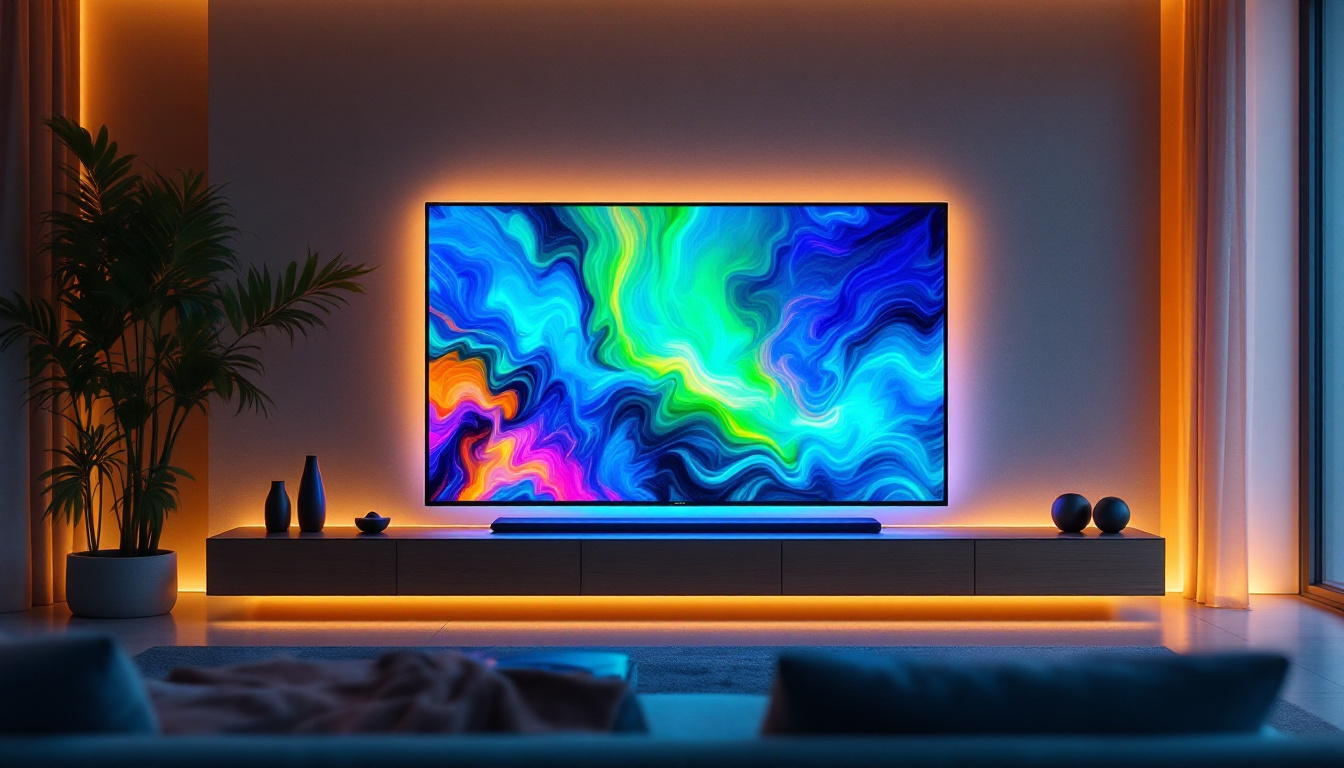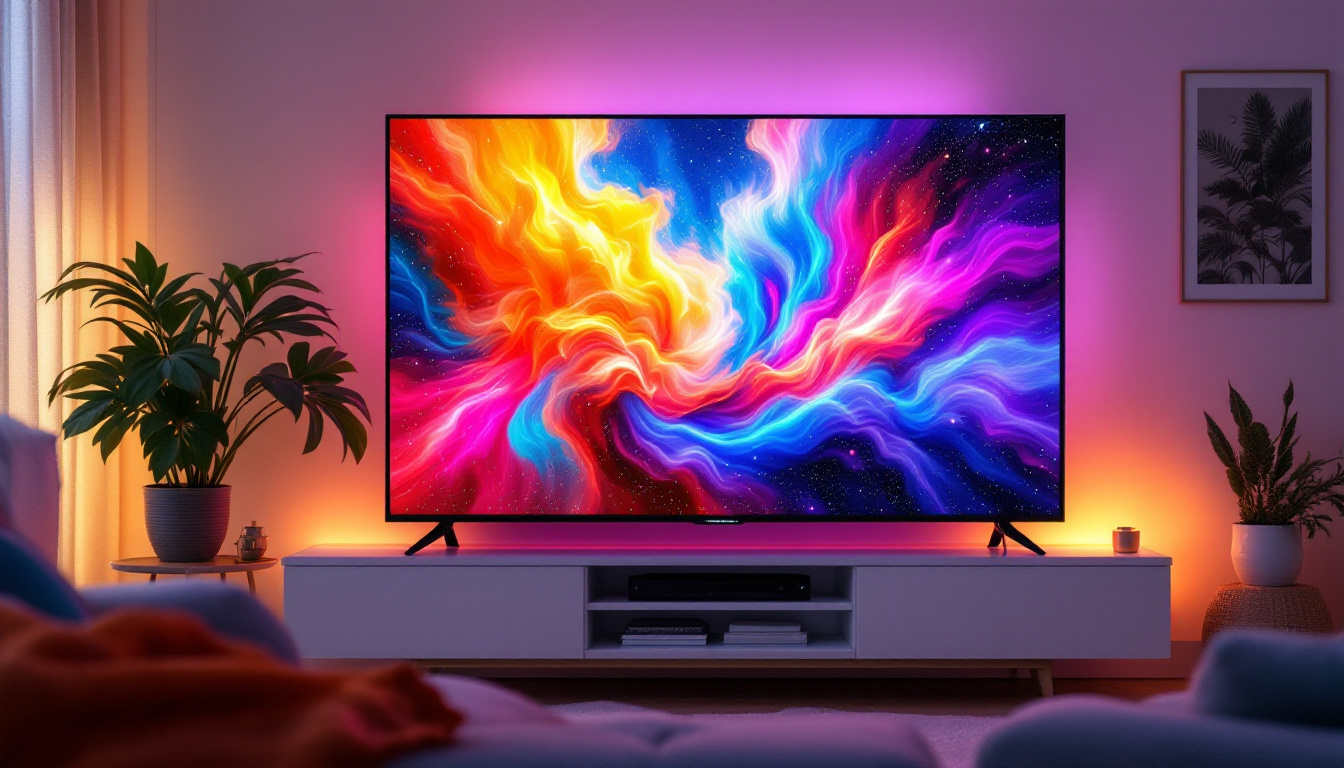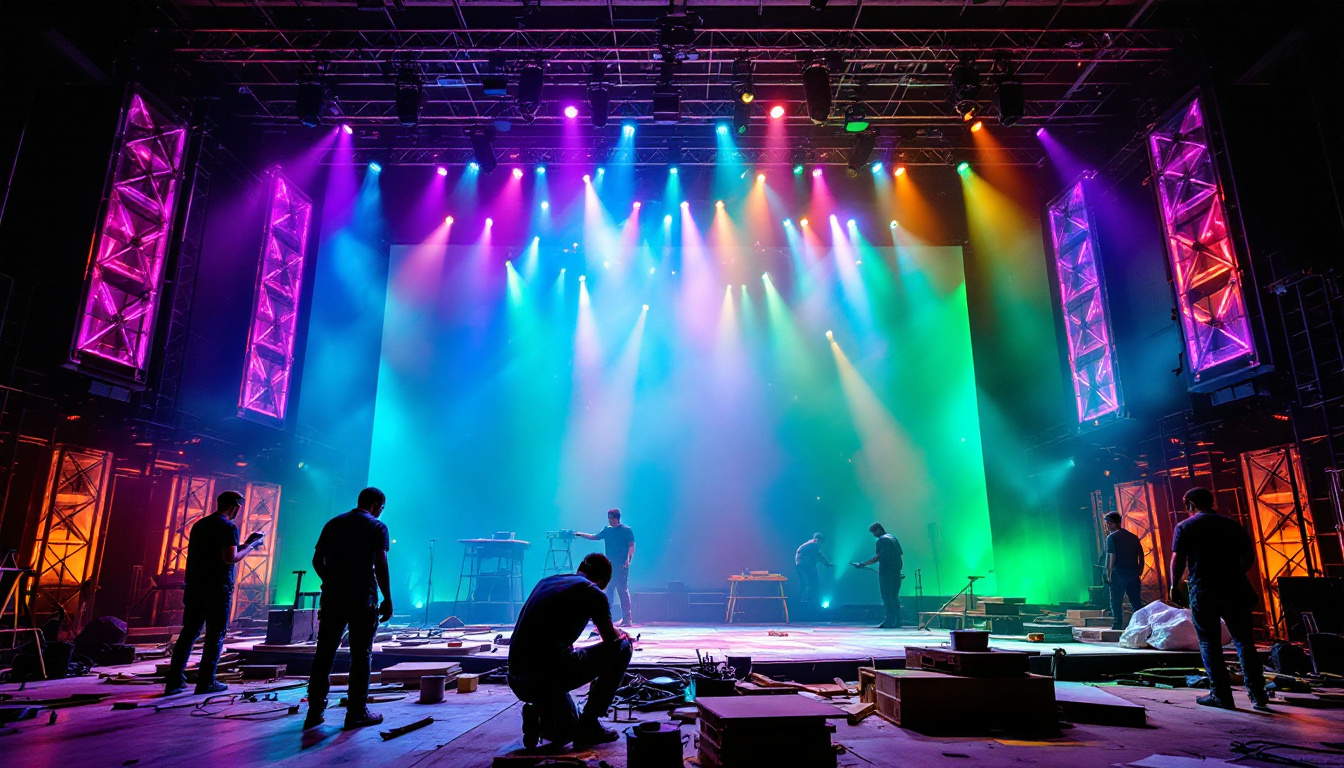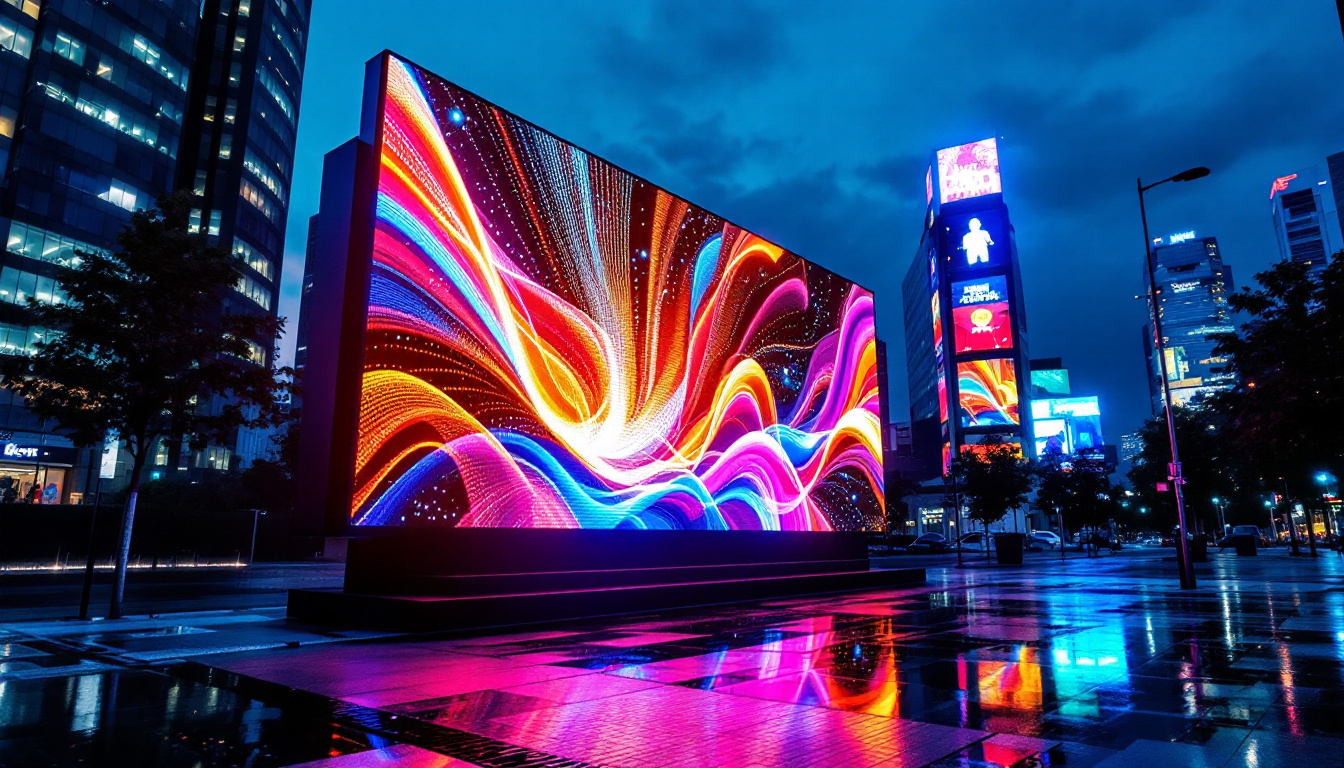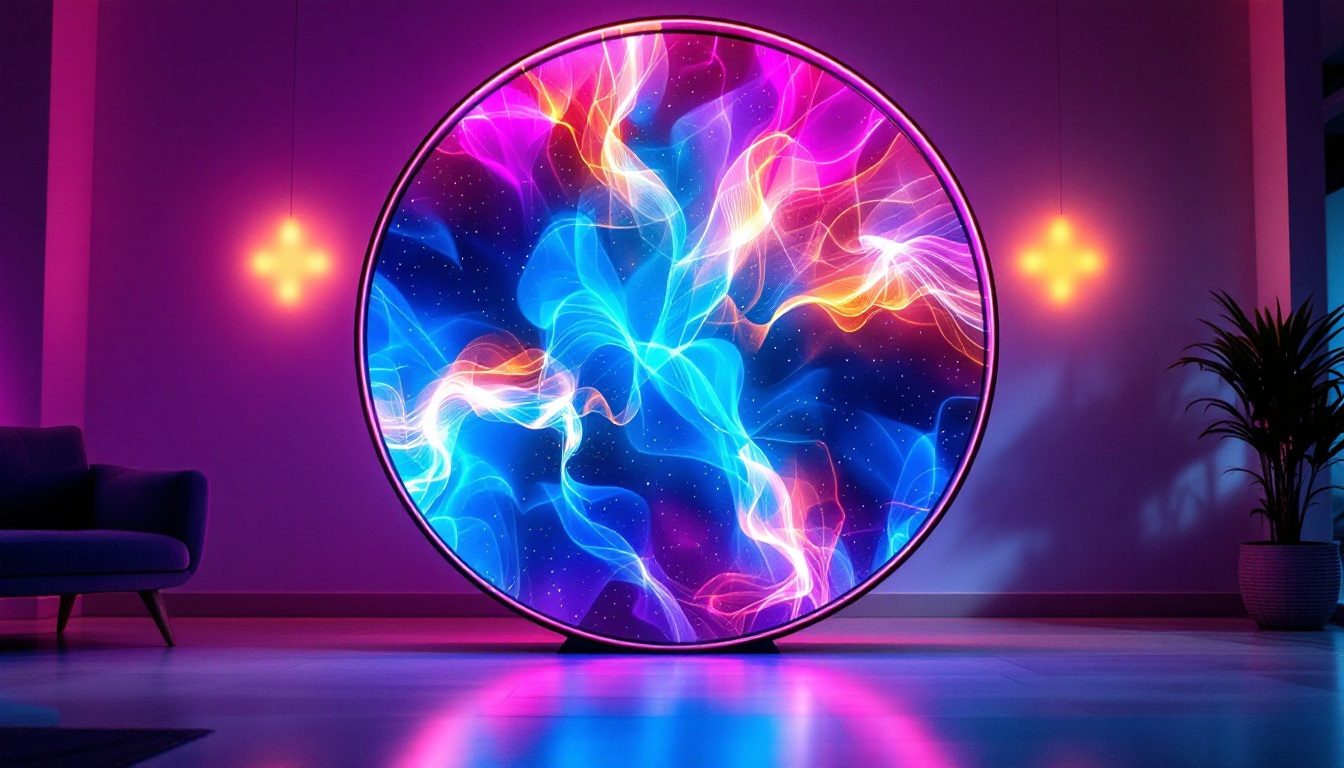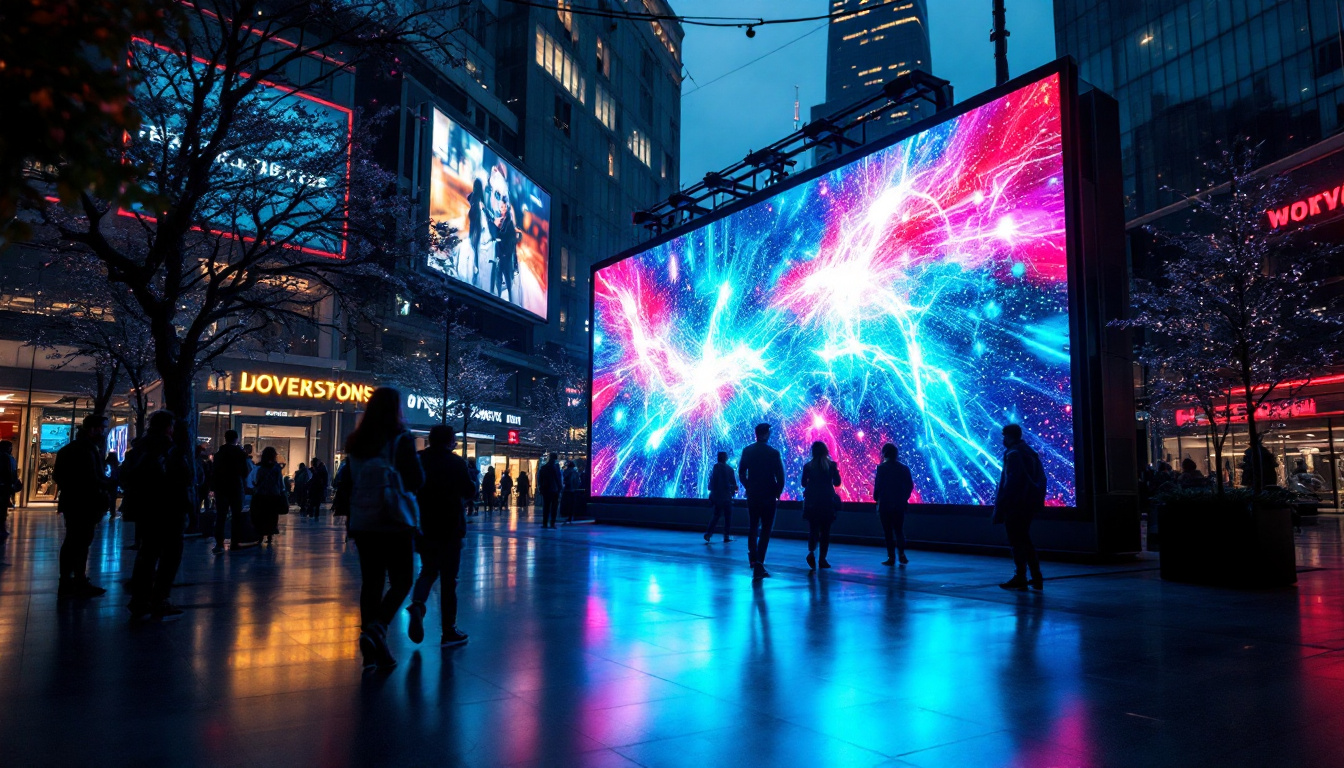In the world of visual technology, the LCD projector screen and LED display have become essential tools for both personal and professional use. Understanding the differences, advantages, and applications of these technologies can significantly enhance the viewing experience. This article delves into the intricacies of LCD projector screens and LED displays, exploring their functionalities, benefits, and ideal use cases.
Understanding LCD Projector Screens
LCD (Liquid Crystal Display) projector screens are designed to work with LCD projectors, which utilize liquid crystals to produce images. These screens are specifically engineered to enhance the clarity and brightness of the projected images, making them a popular choice in various settings, from home theaters to corporate presentations.
How LCD Projector Screens Work
LCD projector screens operate by reflecting light from the projector onto a surface that is typically white or a light color. The screen’s surface is often treated to improve image quality, ensuring that colors are vibrant and details are sharp. When light passes through the liquid crystals, it modulates to create the desired image, which is then projected onto the screen.
The quality of an LCD projector screen can significantly affect the overall viewing experience. Factors such as gain, viewing angle, and texture all play a crucial role in how well the screen will perform in different environments. A higher gain means that the screen can reflect more light, resulting in a brighter image, while the viewing angle determines how well the image can be seen from different positions in the room. Additionally, the ambient light in the viewing area can impact the effectiveness of the screen; darker environments typically yield better results, while screens designed for high ambient light conditions can mitigate this issue.
Types of LCD Projector Screens
There are several types of LCD projector screens available on the market, each catering to different needs and preferences. The most common types include:
- Fixed Frame Screens: These screens are permanently mounted to a wall and provide a flat, taut surface for optimal image quality.
- Retractable Screens: Ideal for versatile spaces, these screens can be pulled down when needed and retracted when not in use.
- Portable Screens: Designed for ease of transport, these lightweight screens can be set up quickly for presentations or events.
Choosing the right type of screen depends on various factors, including the intended use, available space, and budget. Each type has its unique advantages, making it essential to assess specific needs before making a purchase. For instance, fixed frame screens are often preferred for dedicated home theater setups, where image quality is paramount, while retractable screens may be favored in multi-purpose rooms where flexibility is key. Additionally, portable screens are a favorite among educators and business professionals who frequently travel, as they can easily adapt to different environments without compromising on quality.
Moreover, advancements in screen technology have led to the development of specialized screens that cater to specific applications. For example, some screens are designed with ambient light rejection properties, allowing them to perform exceptionally well even in brightly lit rooms. Others may feature acoustic transparency, enabling sound to pass through without distortion, making them ideal for setups where speakers are placed behind the screen. Understanding these nuances can help users make informed decisions that align with their specific viewing needs and enhance their overall experience with LCD projectors.
Exploring LED Displays
LED (Light Emitting Diode) displays have gained immense popularity in recent years, thanks to their superior brightness, energy efficiency, and versatility. Unlike traditional display technologies, LED displays utilize a series of diodes to create images, offering a different approach to visual presentation. Their compact design and lightweight nature make them ideal for a wide range of applications, from personal devices to large public displays.
How LED Displays Function
LED displays work by illuminating pixels with light emitted from diodes. Each pixel consists of red, green, and blue (RGB) components, which combine to create a full spectrum of colors. This technology allows for vibrant images with high contrast ratios, making LED displays particularly effective in bright environments. The rapid response time of LEDs also contributes to their ability to display fast-moving images without blurring, making them a popular choice for video content and gaming.
One of the most significant advantages of LED displays is their ability to produce a high level of brightness without consuming excessive energy. This efficiency not only contributes to lower operating costs but also extends the lifespan of the display, making it a cost-effective solution in the long run. Additionally, LED technology is more environmentally friendly compared to older display technologies, as it contains no harmful substances like mercury and is often made from recyclable materials.
Types of LED Displays
Similar to LCD projector screens, LED displays come in various types, each suited for different applications:
- Direct View LED Displays: These displays are used for large-scale applications, such as billboards and stadium screens, where visibility from a distance is crucial. Their modular design allows for easy customization in size and shape, enabling creative installations that can fit any space.
- LED-backlit LCD Displays: These combine traditional LCD technology with LED backlighting, enhancing brightness and color accuracy. This hybrid approach allows for thinner screens and improved energy efficiency, making them a popular choice for televisions and computer monitors.
- MicroLED Displays: A newer technology, MicroLED displays offer even finer pixel density and are suitable for high-end applications. With self-emissive pixels, MicroLEDs provide exceptional color accuracy and contrast, making them ideal for immersive experiences in virtual reality and high-definition cinema.
When selecting an LED display, considerations such as size, resolution, and intended use are essential. Each type of LED display serves specific purposes, and understanding these differences can help in making an informed decision. Furthermore, advancements in LED technology continue to emerge, offering features like flexible displays that can bend and curve, enhancing the possibilities for creative design in advertising and architecture. The ongoing innovation in this field promises to redefine how we interact with visual content, pushing the boundaries of what is possible in display technology.
Comparing LCD Projector Screens and LED Displays
While both LCD projector screens and LED displays serve the purpose of presenting visual content, they operate on different principles and offer distinct advantages. A comparison of their features can help in determining which option is best suited for specific needs.
Image Quality
Image quality is often a primary concern when selecting a display technology. LCD projector screens excel in environments with controlled lighting, providing sharp and vibrant images. However, they may struggle in brightly lit rooms, where ambient light can wash out the projected image.
On the other hand, LED displays shine in bright conditions, offering superior brightness and contrast. This makes them ideal for outdoor applications or well-lit environments. The ability to maintain image quality in various lighting conditions is a significant advantage of LED technology.
Portability and Installation
When it comes to portability, LCD projector screens have the edge, particularly with retractable and portable models. These screens can be easily transported and set up in different locations, making them suitable for temporary presentations or events.
LED displays, especially larger models, tend to be more permanent installations. While smaller LED screens can be portable, larger configurations often require professional installation and setup. This factor can influence the decision for users who need flexibility in their display options.
Cost Considerations
Cost is always a critical factor in any technology purchase. Generally, LCD projector screens are more affordable than LED displays, making them an attractive option for budget-conscious consumers. However, it is essential to consider the long-term costs associated with maintenance and energy consumption.
LED displays, while initially more expensive, may offer savings over time due to their energy efficiency and durability. The choice between the two often comes down to balancing upfront costs with long-term benefits.
Applications of LCD Projector Screens and LED Displays
Both LCD projector screens and LED displays find applications across various sectors, including education, business, entertainment, and home use. Understanding their specific uses can help in making an informed decision based on the intended application.
Educational Settings
In educational environments, LCD projector screens are commonly used for presentations, lectures, and group discussions. Their ability to display detailed images and text makes them ideal for classrooms and auditoriums. However, as technology advances, many institutions are transitioning to LED displays for their versatility and superior image quality.
LED displays can be particularly beneficial in larger lecture halls or outdoor educational events, where visibility is crucial. The bright, vibrant images produced by LED technology can engage students and enhance the learning experience.
Corporate Use
In the corporate world, both LCD projector screens and LED displays are utilized for presentations, training sessions, and video conferencing. LCD screens are often favored for smaller meeting rooms, where the controlled lighting allows for optimal image quality.
Conversely, LED displays are increasingly being adopted for larger conference rooms and auditoriums, where their brightness and clarity can accommodate larger audiences. The ability to display high-quality visuals can significantly enhance communication and collaboration in corporate settings.
Home Theater and Entertainment
For home theater enthusiasts, LCD projector screens provide an immersive viewing experience, especially when paired with high-quality projectors. They are ideal for movie nights and gaming sessions, creating a cinematic atmosphere.
However, LED displays are also gaining popularity in home entertainment setups. Their sleek design, vibrant colors, and ability to perform well in various lighting conditions make them a compelling choice for modern homes. Whether watching movies, playing video games, or streaming content, LED displays offer a versatile solution for entertainment.
Conclusion
In summary, both LCD projector screens and LED displays have unique advantages that cater to different needs and preferences. Understanding the functionalities, benefits, and applications of each technology can help users make informed decisions based on their specific requirements.
While LCD projector screens are ideal for controlled environments and budget-conscious consumers, LED displays offer superior brightness and versatility, making them suitable for a wide range of applications. Ultimately, the choice between the two will depend on factors such as intended use, budget, and personal preferences.
As technology continues to evolve, both LCD and LED display technologies will likely see advancements that enhance their capabilities further. Staying informed about these developments can ensure that users make the best choices for their visual presentation needs.
Discover Cutting-Edge LED Displays with LumenMatrix
Ready to elevate your visual experience with the latest in LED display technology? Look no further than LumenMatrix, a pioneer in crafting innovative LED solutions that transform any space into a dynamic visual spectacle. From the immersive Indoor LED Wall Display to the vibrant Outdoor LED Wall Display, and from the versatile Vehicle LED Display to the sleek LED Poster Display, LumenMatrix offers an array of options to meet your unique needs. Whether you’re looking to captivate your audience with an LED Sports Display, make a statement with a Floor LED Display, or customize your message with a Custom LED Display, LumenMatrix has the solution. Embrace the future of visual communication with our All-in-One LED Display and LED Transparent Display, designed to deliver your content with unparalleled clarity and impact. Don’t just take our word for it; see for yourself how LumenMatrix is revolutionizing the industry. Check out LumenMatrix LED Display Solutions today and step into a world where your message shines brightest.

